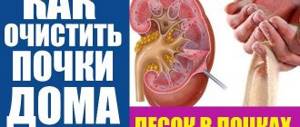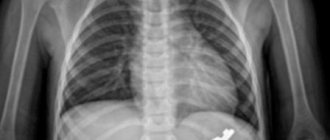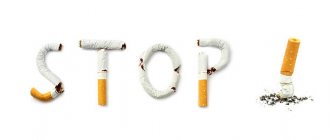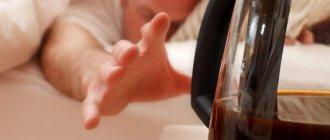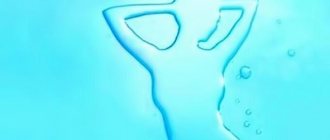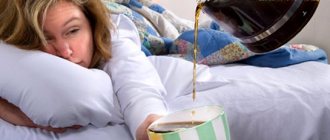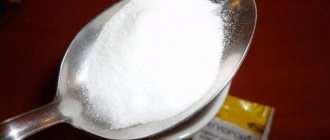It is no secret that chemotherapy is a rather dangerous type of treatment, which can sometimes even do more harm than good, and the rut also has a number of noticeable and unpleasant side effects. Patients begin to lose hair, their nails become brittle, and they often feel nauseated and weak. This is not surprising, because the treatment itself consists of introducing toxic substances into the body that kill cells that are dividing abnormally quickly. The problem is that among these cells there are also healthy ones. However, after cessation, the human body still recovers. And experts even give a number of tips on how to remove chemicals from the body after chemotherapy.
Symptoms of body intoxication in cancer patients
Manifestations of cancer intoxication depend on the location of the tumor, the stage of the process, the size of the tumor, the presence of metastases, their number, and other things.
When the body is intoxicated in cancer patients, the following general symptoms are observed:
- headache;
- temperature increase;
- nausea, vomiting, unstable stool, decreased appetite;
- general weakness, fatigue, drowsiness;
- a feeling of irregularities in the heart, tachycardia, changes in blood pressure;
- weight loss;
- possible shortness of breath;
- pale skin, acrocyanosis (blue discoloration of the tip of the nose, ears), cyanosis of the lips;
- signs of renal and liver failure;
- in the blood the number of leukocytes and ESR (erythrocyte sedimentation rate) increases, the level of protein and red blood cells decreases, and other changes occur.
In the terminal (i.e., final) stage of cancer, the symptoms of endotoxemia are pronounced and are most severe compared to the early phases. Patients experience severe weakness and lie down most of the day. Their mood is low, they are sad, irritable, apathetic, whiny and anxious. There is practically no appetite. There is severe exhaustion. Pathological irregular, arrhythmic breathing appears. They sweat a lot and their temperature periodically rises. Cancer patients are familiar with constant aching pain in muscles and joints. Blood pressure is reduced. The skin may have a jaundiced or even grayish tint.
Blood counts
Blood tests can be used to assess the effectiveness of treatment and overall health status. If a person has overcome the first stage - the primary reactions of chemotherapy, then after it comes the second - the stage of latent manifestations.
Undoubtedly, the indicators in the biochemical, clinical detailed (the number and degree of maturity of cells are indicated) blood test will change. There is a shift in the leukocyte formula towards less mature cells. Leukopenia, thrombocytopenia, and anemia occur. All this is associated with damage and death of blood growth in the bone marrow.
Manifestations may be: spontaneous bleeding of internal organs, the appearance of hematomas, edema, infiltration and tissue destruction, disturbances in the cellular structure of the lining mucosa of the gastrointestinal tract, as well as all tissues that are constantly dividing.
In order for blood cells to be restored, replacement therapy is used in medicine in the form of transfusion of washed red blood cells, platelet mass, fresh frozen plasma, and bone marrow transplantation.
Methods of detoxification therapy for oncology
One of the reasons for the occurrence of intoxication of the body during oncology in the early stages is the circulation of metabolic products of neoplasm cells in the blood, and in the later stages it is the disintegration of the tumor. Therefore, the emphasis should be on treating the underlying disease. Detoxification is carried out in preparation for surgical treatment, as well as during chemotherapy and radiation therapy.
Each method of detoxification therapy for oncology has indications and contraindications. Their use largely depends on the clinical manifestations, type of tumor, state of the body, and stage of the disease.
The method is based on creating blood dilution (hemodilution). Up to several liters of solutions are administered intravenously:
- glucose;
- sodium bicarbonate;
- albumin and others.
When the body reaches flooding, Furosemide is injected. At the same time, cardiovascular parameters, respiratory function and other homeostasis values are monitored.
This method is based on installing drains in the abdominal cavity. Up to 20 liters of liquid are poured into the upper tubes on the first day, and through the lower tubes it pours out on its own.
Thus, toxins are flushed out of the abdominal cavity. The procedure lasts 2–3 days.
Enterosorption involves taking a sorbent in a large dose (up to 1 gram per 1 kilogram of the patient’s weight).
The patient takes the medicine independently or it is administered through a tube in a diluted state. The course of treatment lasts up to 5 days.
Indirect blood oxidation is carried out using sodium hypochlorite (SHC). GCN is administered intravenously, which is involved in detoxification in oncology of the liver, pancreas, and kidneys, accompanied by their failure.
Toxin neutralization occurs due to the formation of active oxygen. The session can last up to 6 hours. A total of 2–3 procedures are used to cleanse the body. Indirect oxidation is used in cases of multiple organ failure in severely ill patients.
Hemodialysis is not performed for malignant tumors in advanced stages and for oncology of the hematopoietic system, as well as for 2 or more severe concomitant diseases. An individual dialysis program is prescribed for each patient. A hemodialysis session lasts 4–5 hours.
If hemodialysis is poorly tolerated, a temporary replacement with isolated ultrafiltration is used. It is effective in the case of the development of edema syndrome in cancer patients.
Hemofiltration consists of passing blood through a hematology filter and replacing the fluid with electrolyte solutions. Thus, up to 7 liters of fluid are replaced without reducing blood volume.
Hemosorption is used to remove toxins with large and medium molecular weight from the blood. Two veins are accessed. The blood is passed through a special apparatus with 200–400 grams of sorbent. The procedure lasts 50 minutes and is carried out 2-3 times a day.
Hemosorption is contraindicated in:
- bleeding;
- multiple organ failure;
- low blood pressure;
- instability of cardiovascular parameters;
- dehydration.
This method is based on plasma replacement. It is taken in a volume of 700 milliliters to one and a half liters during one procedure. Instead they pour in:
- frozen plasma;
- Reopoliglyukin;
- Poliglyukin;
- protein solutions.
Detoxification is carried out in 1–4 procedures. Such purification methods in oncology reduce large-molecular compounds and, to a lesser extent, low-molecular ones.
Healing Fitness
Complexes of exercise therapy, physiotherapy, water hardening will strengthen the immune system, improve lymphatic drainage function, thus, chemical compounds and substrates of tumor decay are eliminated faster.
Sports activities in the form of cardio exercise and gymnastics will improve your physical condition. The intensity of the load is selected strictly individually by a specialist.
Staphylococcus multiplies and settles in certain areas of the vascular wall - inflammation, necrosis, and the formation of microcracks in capillaries and arterioles appear. As a result, sepsis develops.
Let's work together to make the unique material even better, and after reading it, we ask you to repost it on a social network convenient for you. net.
Traditional methods of cleansing the body during oncology
How else to relieve intoxication in oncology? There are folk methods that are based on taking herbal mixtures in small doses with a gradual increase to the maximum and then a gradual decrease. Treatment is carried out under careful monitoring of the patient's general condition.
Herbalists recommend using plant poisons with great caution, especially in weakened patients. Only a doctor prescribes such treatment. Next, gentle methods will be given that can be used at home without dose limitation.
- A decoction of flax seeds and licorice root. You can add one teaspoon of honey to one glass of decoction. If the acidity of the stomach is reduced, add 1-2 tablespoons of sea buckthorn or pomegranate juice to the broth. Preparation: 1.5 tablespoons of seeds, a pinch of licorice root per 200 milliliters of water. Cook over low heat for half an hour. Dosage: half a glass every 2 hours, plus at night.
- Boil the oatmeal decoction in milk for 30 minutes, then strain.
- Tea made from pine or fir needles, onion peels and rose hips. Pour boiling water over and leave overnight. Take in any quantity.
In oncology, different cleaning methods are used. Some of them can be carried out in a hospital, some on an outpatient basis and at home. The following folk recipes can be used by everyone. The remaining cleaning methods are performed under the guidance of a doctor; they are selected individually, taking into account the course of the disease, the development of intoxication and the patient’s condition.
Your doctor will tell you how to recover after chemotherapy
Silver water
This product has a powerful bactericidal and disinfectant effect. To prepare it, just saturate the water with silicon ions. To do this, take a piece of silicon (10 g per 1 liter of water), immerse it in a jar of clean water for a week, and then carefully pour the infused water into a clean container without any sediment formed at the bottom. You should drink this water 3-5 times a day, half a glass.
We recommend reading: Gastritis with low acidity: symptoms and treatment
Water saturated with silver ions is another effective remedy in the fight against bacteria that can settle in the body. To prepare such a bactericidal agent, you need to pour water into a silver vessel and leave it in a place where the sun's rays do not reach for 7-10 days. It should be taken in the same way as silicon water.
There are too many recipes listed to be used to restore the body at the same time. The attending physician will help you choose the most appropriate recovery strategy, who will select the most correct combination and correct sequence of taking traditional medicine. It is this approach that will allow you to overcome the negative effects of anticancer drugs and get better faster.
What are the effects of chemical therapy?
Chemotherapy always has undesirable effects; in cancer patients they manifest themselves differently: in some they are mild, in others they are more severe.
- indigestion;
- nausea and vomiting;
- weakness and fatigue;
- loss of appetite;
- anemia;
- the appearance of hemorrhoids.
Unpleasant but characteristic side effects are cosmetic defects: hair loss, dryness and flaking of the skin, brittle nails with the appearance of longitudinal stripes on them.
How long does it take to recover after chemotherapy?
Rehabilitation at the cellular level begins immediately after the end of the chemotherapy course, which leads to a weakening and reduction of side effects. But how quickly the unpleasant symptoms go away depends on the course of the disease.
According to the patient's rehabilitation plan:
- the composition of blood and bone marrow improves;
- damaged liver cells and intestinal microflora are reanimated;
- immunity and metabolism are restored.
In addition, cosmetic skin and hair care is necessary. You will also need the help of a psychotherapist.
Modern anti-tumor medications prescribed for cancer have a more gentle effect, which makes them easier to tolerate. After a few months, if there is no relapse, patients can return to their normal lifestyle. But sometimes the body is so weakened that full recovery can take up to two years.
Action of Enterosgel
The drug Enterosgel is not absorbed in the intestines and works in the lumen of the digestive tract without entering the blood. With long-term use of cytostatics, oxidative processes in cells are disrupted, which leads to damage to cell membranes. It is these changes that cause intoxication of the body. During treatment, toxic substances accumulate in the body and subsequently affect the patient’s quality of life. That is why, at the end of a course of chemotherapy, oncologists often prescribe sorbents for recovery, in particular the drug Enterosgel. Enterosgel is also different in that it does not destroy the enterohematic barrier, in other words, it does not penetrate the blood. Adsorbs toxic metabolites, membrane peroxidation products, and radionuclides from the blood through the intestinal villi (their membranes). Enterosgel does not adsorb most medications and does not affect their effectiveness. This sorbent helps eliminate pathogenic and conditionally pathogenic microorganisms in the intestine, but at the same time does not affect its normal flora.
Thus, sorbents are recommended to be taken during courses of radiotherapy and chemotherapy treatment, as well as between courses and during the recovery period.
- diarrhea;
- nausea and vomiting;
- frequent diseases of viral etiology;
- the appearance of ulcers in the oral cavity on the mucous membrane;
- exacerbation of chronic pathologies of the stomach and intestines (erosions, peptic ulcers);
- changes in blood composition (decrease in the number of red blood cells and hemoglobin);
- inflammatory processes in the vascular system.
What medications speed up rehabilitation?
During the recovery period, the doctor may prescribe a course of medications to relieve unpleasant symptoms. This may include:
- anti-vomiting pharmaceuticals;
- hepatoprotectors for the restoration of liver cells;
- medicines against stomatitis;
- enterosorbents for intestinal cleansing;
- medications that help increase white blood cell levels;
- anti-anemia remedies.
After therapy, the patient has an urgent need for vitamins, which accelerate the recovery process and normalize body functions. To increase the regenerative capabilities of cellular structures and cope with thrombocytopenia, complexes containing ascorbic and folic acid, carotene and vitamin B9 will be required.
What to include in your diet to improve your well-being
After treatment, you need to pay special attention to the patient’s menu. When creating it, one must proceed from the principles of a healthy diet, enriching the diet with vitamins and microelements that are required to improve the functioning of all organic structures.
The daily menu of an oncology patient should include:
- fermented milk products;
- stewed, boiled and fresh fruits and vegetables;
- eggs, lean meat, lean fish;
- cereal crops.
Of particular benefit are blue and red berries - cranberries, blackberries, currants, raspberries, blueberries, strawberries, lingonberries. They have a diuretic effect, which helps eliminate harmful substances.
Red and blue berries will help cleanse the body of toxins.
If the patient is bothered by attacks of nausea, in order to reduce their intensity, you can drink currant fruit drinks or dry red wine in small quantities.
After a course of chemotherapy, canned, pickled and smoked foods are prohibited. Also, to speed up the removal of toxins from the body, it is recommended to drink more fluid: at least two liters per day.
Spa treatment
Comprehensive care, attentiveness of medical personnel, and psycho-emotional relief will help relieve stress in an oncology patient.
It is important to select the optimal sanatorium with special recovery programs and psychological support courses for this category of people. Personal selection of climatic conditions, thermal springs are welcome.
How to resuscitate the liver
Liver cells - hepatocytes - are subject to the most severe damage, since this organ is directly responsible for neutralizing toxic substances and medicinal components.
In addition to the course of hepatoprotectors, it is recommended to use oats. Flavonoids and polyphenolic compounds included in its composition help improve lipid metabolism and normalize intestinal and liver functions.
In order for hepatocytes to regenerate faster, it is better to prepare milk-oat jelly at home. A tablespoon of oat grains is poured into a glass of milk and boiled for 15 minutes, after which it is infused for the same amount. Drink in small portions throughout the day.
Infectious agents
There are pathogenic and conditionally pathogenic microflora in the human body. Conditionally pathogenic is a set of bacteria and viruses that contribute to the normal functioning of organs, but only at a certain titer.
If the amount exceeds the norm, unwanted changes occur. So after chemical therapy, fungi are activated, and candidiasis occurs.
Staphylococcus multiplies and settles in certain areas of the vascular wall - inflammation, necrosis, and the formation of microcracks in capillaries and arterioles appear. As a result, sepsis develops.
Normally, platelets participate in the hemostatic process; their layering on each other clogs the bleeding site. However, they do not have high selectivity and are able to settle in narrow spaces of blood vessels, areas of inflammation, fatty infiltration - thrombosis occurs.
You should pay close attention to elevated temperature, even if it is low-grade. Perhaps this is evidence of a developing inflammatory infectious process, in which fungi, viruses, and bacteria may participate.
Therefore, monitoring your health status is very important, as well as following the doctor’s recommendations, which can be carried out not only in a hospital hospital, but also at home.
How to raise immune status
To increase immune protection, antioxidants and vitamins are prescribed. You may also need measures to help restore immune strength and accelerate the elimination of toxins:
- special treatment in a sanatorium;
- physiotherapeutic procedures;
- lymphatic drainage;
- Exercise therapy.
Therapeutic gymnastics allows you to get rid of swelling and pain, stimulates the body to eliminate cancer cells as quickly as possible. Lymphatic drainage procedures help stop inflammatory processes and strengthen immune defense, as well as stimulate cellular metabolism.
Medicines to remove waste and toxins from the body
A person is able to absorb not only vitamins, useful micro and macroelements, but also absorb and accumulate harmful toxic substances that get inside with food, from the external environment, and are the result of an unhealthy lifestyle. Waste products are the results of metabolism. They provoke changes in blood composition and organ dysfunction. They most often affect the biliary and urinary systems. Poisonous toxins cause vascular and heart diseases, gastrointestinal and respiratory disorders. And only after the specialist determines the source of the malfunction of the body, an intensive course of treatment is prescribed, aimed at removing toxins and waste using potent drugs.
What will help improve the condition of blood vessels
After a chemotherapy course, the veins become almost invisible, which leads to problems when taking tests. It is also difficult to install an IV with saline solution, which flushes chemicals out of the body. Hematomas appear at the injection sites, they itch and itch.
After chemotherapy, phlebitis, an inflammation of the vascular walls, becomes a common occurrence.
To eliminate such problems, use alcohol lotions, compresses made from cabbage leaves or plantain. Sometimes it is acceptable to use ointments if there is no allergy.
Vein restoration
Since chemotherapy involves intravenous infusion of toxic antitumor drugs, a side reaction is toxic phlebitis or venous inflammation, which is manifested by burning and soreness along the veins.
In addition, in the area of the shoulders and elbows, the walls thicken and the lumens in the vessels narrow, and phlebosclerosis develops, impairing the blood supply. Such a complication requires the mandatory application of an elastic bandage and rest of the limb.
Local external ointment preparations such as Troxevasin, Indovasin or Hepatrombin are also widely used to treat veins. The ointment is applied, without rubbing, to the skin above the vein three times a day. Gumbix tablets, which are classified as thrombolytic drugs, are also prescribed.
What to do to make your hair grow faster
Baldness is a common side effect of treatment, but not everyone experiences it the same way. Some patients experience partial alopecia, while others experience complete loss of hair on both the head and body. If hair remains here and there, it will be dry, brittle, and lifeless.
To speed up the growth of new ones, you need to:
- Do not dry with a hot hairdryer, but let it dry naturally;
- When washing your hair, use formulations for dry hair, regardless of what product you used before;
- do not curl or straighten;
- comb exclusively with a soft brush;
- avoid exposure to direct sunlight;
- include in the menu dishes rich in beneficial microelements.
To strengthen and accelerate growth, you can apply nourishing masks, for example, based on eggs, honey, rye bread or kefir. But not store-bought ones, but homemade ones, made exclusively from natural products.
How quickly your hair grows depends largely on proper care.
The time it takes for hair growth to recover depends on the individual characteristics of the person. But the lost hairs will definitely grow back. Interestingly, they become thick, thick and strong. The tone may change slightly, becoming brighter and more saturated.
Preparations based on algae
Today, algae-based preparations that remove toxins from the body are successfully produced all over the world. Among them are “Kelp”, “Algamarid”, “Alga Lux”, “Fucus Oil” and others. It is worth noting that such drugs are considered active immunomodulators. They normalize water-salt balance and enhance cellular respiration, protect the skin from aging and wrinkles.
In addition, preparations based on algae are complexing substances: they bind strontium, cadmium, lead salts and radionuclides, as well as toxins of some microorganisms. The substances contain vitamins D, C, A, B2, B1, bromine, iodine and other trace elements. Thanks to this, the drugs have a wide range of actions: they increase the level of hemoglobin in the blood, improve the blood, restore the immune system, and normalize metabolic processes.
How to recover after chemotherapy using folk remedies
Traditional medicine has a fairly large arsenal of restorative recipes. The most popular decoctions include:
- St. John's wort and yarrow - help cleanse the intestines. Mix a large spoonful of a mixture of medicinal herbs in a glass of boiling water, infuse and drink twice a day;
- flaxseed – helps eliminate toxic substances. Infuse 15 g of flaxseeds in 250 ml of boiling water for a quarter of an hour. Next, filter and consume a tablespoon five times a day, regardless of meals;
- Rhodiola rosea – to restore immunity. A large spoonful of plant material is poured with 0.5 liters of boiling water. Let it brew for six to eight hours. The tincture is filtered and drunk three times a day a quarter of an hour before meals;
- aloe – as an anti-inflammatory agent. You will need 80 ml of juice squeezed from the leaves plus 10 ml of vodka. The components are mixed, the product is taken in a small spoon three times a day for a week.
To improve the functioning of the digestive system, you are allowed to consume freshly squeezed plantain juice. If your blood clots poorly, a nettle infusion or lungwort tea will help. The latter not only normalizes coagulation, but also prevents the further formation of mutated cells. To remove toxic substances from the body, you need to drink rosehip teas.
If you know how, you can recover from chemotherapy quite quickly. It is important to choose the right rehabilitation course and start activities from the first days of treatment.
Also interesting to read: lung cancer in women
Where to relieve intoxication of the body if the hospital refuses to admit you?
Health to everyone and good luck!
Health to everyone and good luck!
Mark Azrielevich, thank you very much for your answer. We understand everything - we will urgently collect documents and contact Vladimir Alekseevich. The only question is: do they do a CT scan or MRI of the brain in hospital No. 11, or do we need to do it ourselves before going to the hospital? We did an X-ray of the lungs and an ultrasound of the internal organs in June - everything was clear there, but the brain was not examined. Now my mother’s speech is impaired, not severely, but it is impaired, and the mobility of one hand is slightly impaired. They called a neurologist; he said that an MRI needed to be done and that it was either a medical condition or a stroke, and that speech could be impaired due to intoxication. We need to determine whether there is MTS there or not, because if MTS is only in the bones, then by removing the general intoxication of the body, we can hope for the therapeutic effect of Zometa and Samarium, which will appear in Obninsk in September. We were so hoping to last until September, but with such intoxication we probably wouldn’t even be accepted in Obninsk. Mom has lost weight dramatically over the past 3 weeks, although she tries to eat well. If a CT scan is not done in hospital No. 11, then we will try to do it in another place, depending on what condition she is in, because even moving her from the bed to the stretcher will cause very severe pain.
Natalia, in our experience, doctors from the clinic attribute any deterioration in the condition to cancer intoxication and ignore the most banal diseases.
My mother had very severe intoxication after irradiation (kidney liposarcoma, medullary cancer of the thyroid gland, multiple metastases in the bone) and it took me incredible efforts to put her in the hospital for a couple of drips - they said that the intoxication was tumor and we did not want to care for her during the last days of her life . After the first dropper she felt better. But, I repeat, we had radiation poisoning.
The second case was when she began to suffer from headaches to the point of nausea and vomiting. We were told about brain metastases and again advised to prepare for the worst in the near future. It turned out to be a hypertensive crisis.
And one more moment. As I understand it, your mother’s main tumor has been removed, and the lesions on the skin have been stabilized. What is there to disintegrate to cause such intoxication? My mother’s entire skeleton is affected, there is no living space, but we do not observe any intoxication. It is necessary to check whether there are new lesions in other organs or look for a non-oncological source of this condition.
Added after 2 minutes 9 seconds The link has a parenthesis at the end. Post about the X-ray radiology center below.
We do not do CT or MRI. If the mother's general condition allows it. then of course it is better to do research, because... we need to determine what it is (metastases or cerebrovascular accident). Brain symptoms may also be due to an increase in Calcium ions in the blood and their entry into the brain. Calcium ion content analysis can be carried out here.
Today we did a CT scan of the brain. Conclusion: cerebral edema. What to do? The neurologist said that we should go to the hospital urgently. I called a bunch of hospitals that have a neurovascular surgery department, but they refuse to accept a patient with this diagnosis. We are afraid to call an ambulance and have them take us somewhere, because my mother needs care day and night, and in a simple city hospital we will not be allowed to stay overnight, and there will be no proper care for her there. Through an acquaintance, I found a place where I could put him - the Ministry of Defense hospital on the highway of enthusiasts. A friend begged the manager to take our mother, but we can go there only on Monday, and until Monday I will inject her with dexamethasone myself (as Vladimir Alekseevich said). What could cause cerebral edema if cerebral edema and stroke were not detected on CT?
Added after 6 minutes 58 seconds And also, tell me where I can buy tramal in ampoules without a prescription, before that we used tablets, and today when my mother was transported to the hospital in order to do a CT scan, the doctors from the ambulance injected her with tramal and the result was very good since 11am until now she has no pain and is feeling more or less well. The pills didn't help that much.
What to do? Help. Maybe we shouldn’t wait until Monday and call an ambulance? But I’m afraid that they won’t take her with cerebral edema, and if they do, they won’t really treat her with anything, because now it’s Friday and the weekend is ahead, and she’ll be lying there alone, well, if not in the hallway.
Natalia, of course call the ambulance!
Natalia, I can give you the Tramal (but drops), there are some leftovers, my dad’s. Maybe they will help you hold out until Monday. If necessary, leave information on how to contact you. (For free, of course). Hang in there.
Thank you very much for your support. We have pills, but yesterday the doctors gave her an injection and the pain became less - she lay calm all day. But at night she took one tablet, and the night also passed without severe pain. Most likely, the pain relief is the effect of Zometa, which we administered on Tuesday. The first two days after the notice, there was a severe exacerbation of the pain syndrome. The doctor said that this is normal, and that this can happen, and then the pain should decrease. I think that's what we did.
Chemotherapy courses have a merciless effect not only on pathological cells, but, unfortunately, on the entire body. Dead cancer cells after a chemotherapy session are not eliminated on their own; they are transformed into necrotic tissue. Dead cell particles enter the bloodstream and cause deterioration of the condition.
Chemotherapy provokes the appearance of the following symptoms: severe weakness, headaches, nausea, vomiting, increased body temperature and decreased performance. To restore the body after chemotherapy, it is first necessary to cleanse it of dead pathological cells.

